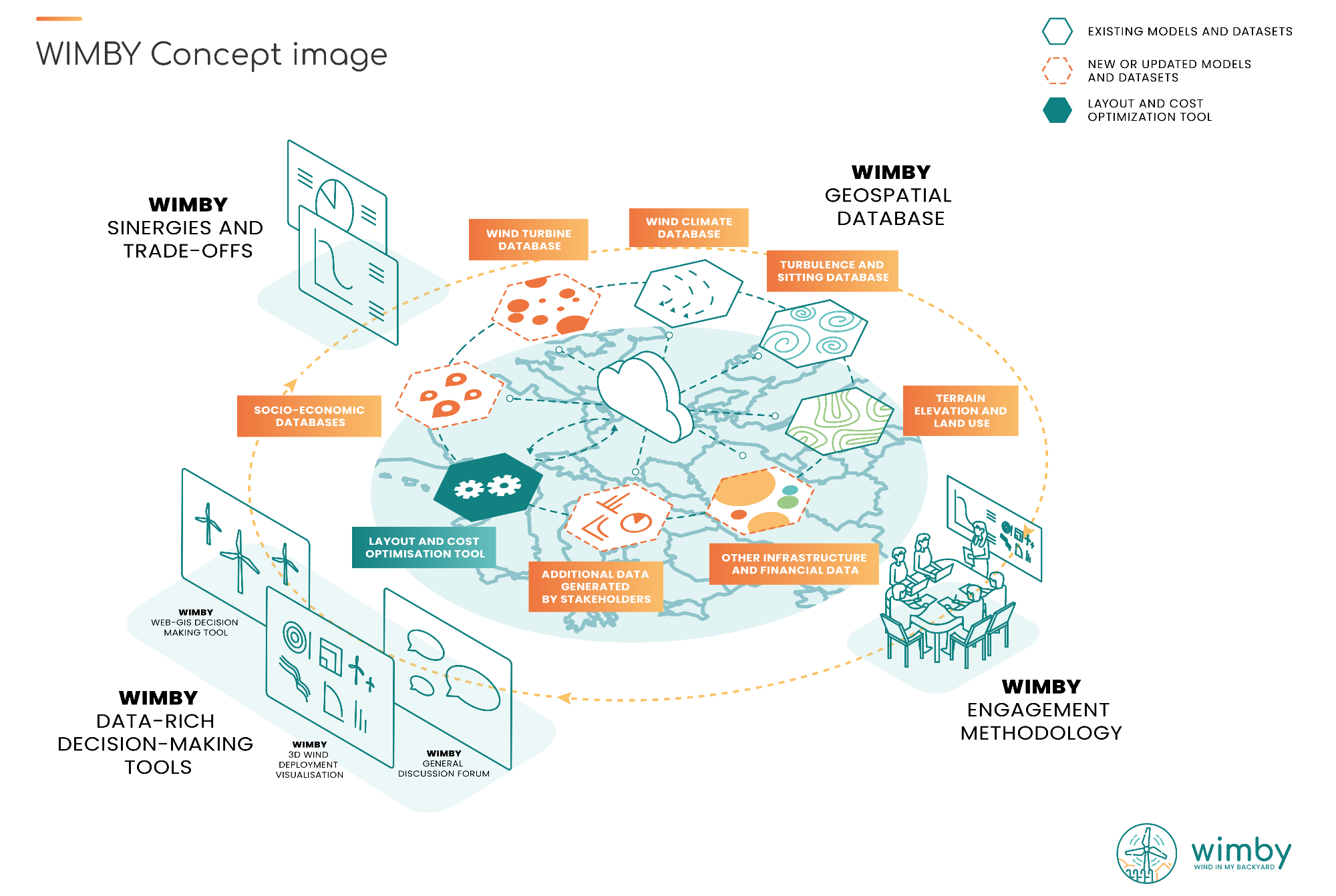IIASA researchers are participating in a new Horizon Europe project that will create innovative tools to facilitate interaction between citizens and stakeholders, particularly around knowledge sharing, collaborative evaluation of impacts, controversies mitigation, and the social innovation capability of new onshore and offshore wind power deployments.

Image Credit: © WIMBY
The Wind in My Backyard (WIMBY) project advances social awareness and engagement on big wind power installations in the EU by utilizing holistic modeling methods.
WIMBY, according to the researchers, can pave the way for a greener and more sustainable future by expediting the acceptance of wind farms that are both widely accepted by the public and economically viable while acknowledging and addressing the concerns of local communities and taking environmental factors into account.
The project will acquire real-world data at four pilot sites in Austria, Italy, Norway, and Portugal, as well as engage directly with local people to discover the elements impacting public attitudes regarding wind power and its applications.
The pilot projects chosen include a wide range of geographical, technological, cross-societal, and ecological aspects, ensuring that the developed tools are relevant and valuable to wind power companies and citizens, facilitating a fair transition to future energy citizenship.
Climate change will have a significant impact on people and nature in the coming decades unless further steps are taken to reduce the share of fossil fuels in the energy mix. Wind power can play a significant role in decarbonizing our economy. However, wind turbines, which are becoming increasingly large, can present a collision threat to flying animals, such as birds and bats.
Adrienne Etard, Researcher, Biodiversity, Ecology, and Conservation Research Group, Biodiversity and Natural Resources Program, International Institute for Applied Systems Analysis
The study undertaken at IIASA as part of the WIMBY project focuses on examining the impacts of wind farms on birds and bats and investigating which species are most at risk to inform decisions about where wind turbines can be put at the continental scale.
Wind farm implementation can be combined with solutions that reduce collision risks as well as energy losses, such as anti-collision markers, monitoring, and operating limits during high-risk periods.
Ensuring that wind farms do not exacerbate the risks facing biodiversity, and in particular that they are deployed in areas where they can be the least harmful to flying animals and with appropriate mitigations measures, can allow us to harness the benefits of wind-power technologies while minimizing other impacts on the environment.
Adrienne Etard, Researcher, Biodiversity, Ecology, and Conservation Research Group, Biodiversity and Natural Resources Program, International Institute for Applied Systems Analysis
Although wind power is seen as one of the most promising solutions for reducing carbon emissions and mitigating climate change, it has also encountered resistance from stringent restrictions and local communities. The WIMBY project solves these issues by actively involving citizens and stakeholders throughout the development process, collecting their concerns and input.
Over the next three years, scientists working on this initiative will collaborate to create a new set of tools to encourage direct community engagement in wind farm planning, implementation, and long-term coexistence.
The WIMBY Consortium has enlisted a multidisciplinary team to co-develop a number of interactive engagement tools that can be used by anybody, both experts and non-experts, encouraging widespread participation in the project’s many phases.
A Web-GIS platform, a 3D immersive environment, and an open discussion forum will be included in the tools, allowing users to exchange ideas and make informed decisions.
The WIMBY Consortium’s 16 European partners will share their multidisciplinary expertise to address all aspects of wind energy development, including studies of the territory; impacts on biodiversity, landscape, and communities; technical studies to develop the most appropriate and user-friendly tools; and citizen science and social research methodologies to develop best practices for involving local stakeholders in decision-making.
WIMBY is a project that prioritizes the needs of citizens and communities to discover the best compromises and tools for breaking down barriers to wind energy development and contributing to the European Union’s collective action to decarbonize.
All European citizens are encouraged to follow the project and participate in the research by reading the most recent updates and accomplishments on the official website and major social media platforms.